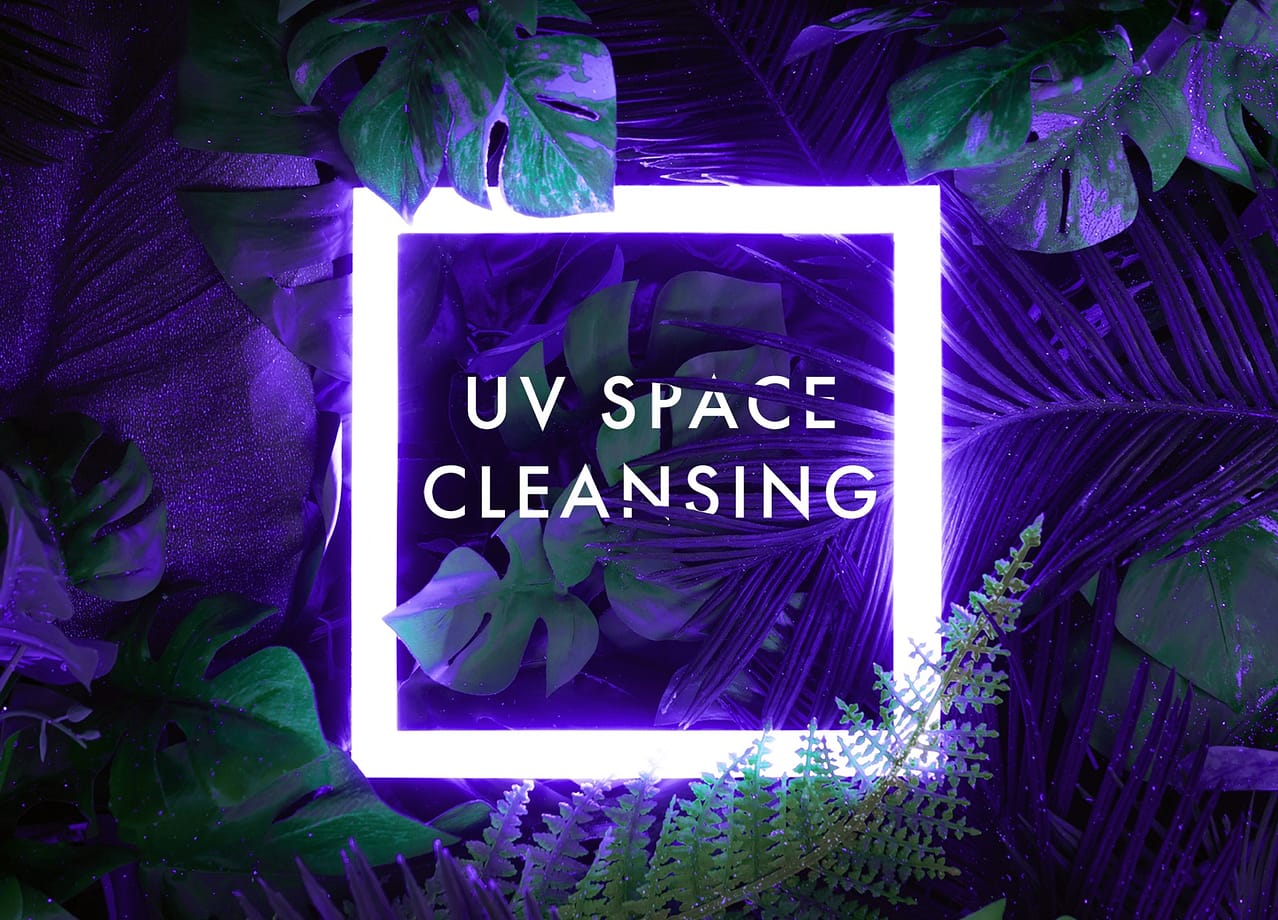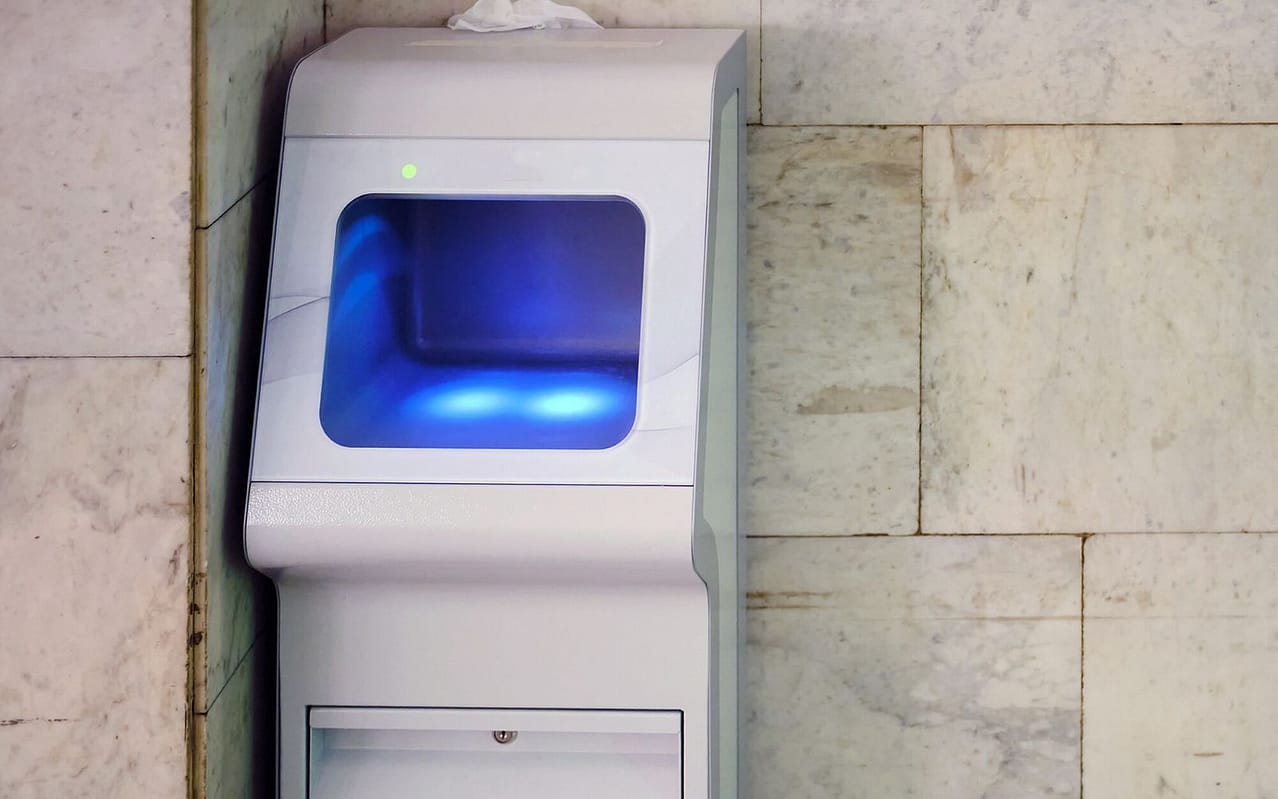
By Gary Bouthillette, AIA, NCARB, LC | Senior Director of Lighting Design
The current COVID-19 crisis has generated renewed interest in the use of ultraviolet technologies to combat the spread of pathogenic microorganisms. With the increase in questions about lighting-related products that claim germicidal properties, this post discusses what UV is, the effectiveness of different types of UV to inactivate pathogens, and how UV might be applied to architectural environments, for example, to disinfect workspaces. Our goal is to help designers and clients make informed decisions about the potential use of ultraviolet technology to mitigate exposure to pathogens such as the virus that causes COVID-19.
Generally referred to as germicidal ultraviolet (GUV) and essentially considered a “lighting” technology, ultraviolet (UV) is actually a form of non-visible electromagnetic radiation; it is not “light” in the usual sense. UV is called ultraviolet germicidal irradiation (UVGI) when used to disinfect a surface or space.
Much of the information discussed here is derived from a report (IES CR-2-20-V1) released and published this month by the Illuminating Engineering Society (IES) Photobiology Committee. It can be downloaded directly from the IES website and provides more detail on some of the topics below. Please note that none of this information should be taken as medical advice.
Germicidal Effects of UV
UV is said to “inactivate” pathogenic organisms by stopping them from reproducing. With viruses it does this by damaging their DNA or RNA through photochemical reactions. The more energetic the UV source, the more effective it is at tearing apart the building blocks of the organism. UV-C is highly energetic; therefore it can inactivate a wide range of pathogens more quickly than other forms of UV and visible light.
UV and its Different Forms
UV is a form of radiation not visible to the human eye that occupies a position on the electromagnetic spectrum adjacent to the violet portion of the visible light spectrum. There are three types of UV relevant to our topic, which are classified as A, B, and C. Another type of light we’ll discuss is a form of visible violet light.
UV-C is the most energetic type of UV and has the shortest wavelengths, ranging from 200 to 280 nanometers (nm). It is considered highly effective for inactivating pathogens including fungal spores, bacteria, and viruses. An interesting quality of UV-C is that while it is extremely harmful to microorganisms, it can’t penetrate very far into larger organisms such as the human body because it is absorbed by the outer layer of skin. However, it can be harmful to our eyes; people should never be directly exposed to UV-C without proper precaution/protective gear.
UV-B occupies the middle range of UV wavelengths from 280-315 nm. It is less energetic than UV-C; therefore, a higher dose is required to inactivate microorganisms. For humans it can be hazardous to both skin and eyes because it penetrates deeper into tissue, resulting in sunburn-like effects. Excessive exposure can be carcinogenic.
UV-A is the least energetic type of UV radiation, occupying wavelengths from 315-400 nm. Like UV-B, it can be harmful to skin and eyes, so direct exposure should be avoided. UV-A is the most prevalent form of UV we receive from outdoor sunlight because much more of it makes it through the earth’s atmosphere than UV-B, and UV-C is mostly filtered out. It is important to note that per the IES Photobiology Committee, UV-A light is not considered “germicidally effective” to inactivate viruses.
Violet light (405 nm is the most relevant wavelength to this discussion) is visible to the human eye and is not usually considered harmful to humans. Common uses include the hardening of some plastics and even the curing of nail polish. Similar to UV-A, the IES does not consider 405 nm light effective for inactivating viruses on an environmental scale, although many products featuring this type of light are being marketed for surface disinfection.
Types of Environmental Disinfection
There are two main ways to apply GUV in a space: surface disinfection and air disinfection. These address the two common pathways that pathogens like viruses use to enter the body: contact with contaminated surfaces (followed by touching eyes, nose, mouth, etc.) and breathing in airborne pathogens.
Surfaces
Surface disinfection using UV can be difficult for several reasons. Spaces being treated must be unoccupied, since unprotected exposure during this process is always hazardous to people. Also, as with visible light, UV sources cast shadows, so a direct line of sight to the emitter is required to disinfect a given surface. Another problem in many environments is the type of surfaces requiring disinfection: UV does not penetrate porous materials well; finishes such as carpet may not be able to be adequately disinfected by GUV.

UV phone cleaning stations like this one are an example of small-scale UV surface cleaning.
An intriguing application of UV surface disinfection is the use of “UV robots” in patient rooms at hospitals. The apparent success may be attributed to the robots’ ability to move around unoccupied rooms with high-intensity UV-C lamps that emit in all-directions—more thorough than a human operator’s capabilities. This allows far more exposed surfaces to be disinfected than with a fixed light source, plus the finishes in hospital settings tend to be non-porous, which is ideal for this type of application. The procedure is said to take as little as 10-15 minutes per patient room.
Could robotic technology be translated to other types of environments? For larger spaces, like open office workplaces, one can imagine the army of robots (costing $60,000-$80,000 each) needed to cover all the surfaces during unoccupied hours. As a caveat, current technology requires relatively frequent recharging to power both mobile units and UV lamps. Focusing on shared, high-touch surfaces might reduce the scope of the task.
In the hospitality industry, many hotel rooms are now left vacant for up to three days between occupant engagements due to concerns about lingering viral contamination. Could GUV robots be used in these spaces? One potential barrier might be the typical finishes in hospitality environments: things like carpet, upholstery, and bedding are porous and difficult for UV rays to penetrate. High-touch surfaces made from non-porous materials would be much easier to treat.
Another complication of GUV use for surface disinfection is that many materials break down with long-term exposure to UV. Plastics are among the most susceptible, but paint and other finishes can be affected as well. Furthermore, some articles on this topic note that UV-resistant plastics are usually formulated to protect them from UV-B, but not UV-C.
Air
Air disinfection techniques for UV have been in existence for decades. The objective is to inactivate airborne pathogens emitted into a space by an infected occupant before other occupants inhale them. While GUV can be used to disinfect the air inside HVAC ducts, this method may not be able to stop occupant-to-occupant transmission within the same room.
The most common application of GUV for air disinfection is called upper-room GUV. In this instance, GUV fixtures mounted high on walls or suspended from ceilings carefully emit UV-C rays from seven feet or more above the floor. This exposes a large volume of air to treatment without exposing the occupants. A key requirement of this type of system is to pair it with increased air movement and thus ensure treating the total volume of air in the space.
CONCLUSIONS
When evaluating potential GUV solutions for interior spaces, it is important to know what type of UV the proposed equipment is designed to emit, UV-C being the most effective type against most pathogens, including viruses. The design and placement of fixed UV-C lighting fixtures must carefully avoid directly exposing occupants. For mobile applications, robotic systems show promise with regard to surface disinfection, but may have limitations based on the amount of ground each unit can cover, the cost involved, and the types of architectural finishes that can be adequately disinfected.
Specifiers and clients should exercise caution when confronted by manufacturers’ claims about their products’ effectiveness, particularly with respect to inactivating viruses like COVID-19. For example, a product that has proven effective against bacteria such as E. coli and Staphylococcus may not be effective against a virus like the one that causes COVID-19.
Products marketed as GUV or for use in UVGI should be carefully evaluated. If the type of UV light source used emits visible light such as 405 nm or a form of UV other than UV-C, extra caution on the part of the specifier or buyer is advised because not all types of ultraviolet radiation are suited for GUV. Additionally, any product designed to emit light directly onto surfaces (as opposed to indirectly, such as upper-room fixtures) must be used with extreme care during operation and certainty that no humans are endangered. Above all, any product that emits UV of any type should be located, installed, and operated with due caution to always avoid direct exposure to occupants.
Disclaimer: IA does not and cannot approve, or endorse the material(s) or product(s) described herein, or any method or manner of handling, using, distributing, or dealing in such material(s) or product(s). Nothing contained in our documents shall be deemed or construed as an approval, endorsement, or recommendation by IA in any way.

